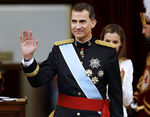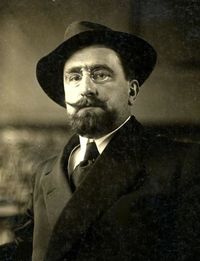Difference between revisions of "Archive:Norjihan"
| Line 77: | Line 77: | ||
===The Vadini Dictatorship=== | ===The Vadini Dictatorship=== | ||
[[File:Vadini.jpg|200px|thumb|left|Picture of Vadini taken not long after his ascension to power]] | [[File:Vadini.jpg|200px|thumb|left|Picture of Vadini taken not long after his ascension to power]] | ||
==Geography== | ==Geography== | ||
Revision as of 00:18, 13 August 2017
| The Gennist Federal Republic of Norjihan ynioyvu qzemud oɂmamiiɂcebud nioykuqzeef |
||||
|---|---|---|---|---|
|
||||
| Motto: waɵan ge genvag nodjinenows ɵwegina
Wathan gze Gzenvagz Nodjinenows thwegzihna There is no Norjihan without Gzen |
||||
| Capital and largest city | Hajenired | |||
| Official languages | Norjihani | |||
| Recognised regional languages | Szezk | |||
| Ethnic groups (2016) | Szezko-Norjihani - 98%, Other - 2% | |||
| Demonym | Norjihani | |||
| Government | Federal Parliamentary Constitutional Monarchy | |||
| - | King of All Norjihanis | Uzedlem Olboros
 |
||
| - | Prime Minister | Jula Boren | ||
| - | Prince Elect | Vuren Lorndinal | ||
| Legislature | The Councils | |||
| - | Upper house | Council of the Tribes | ||
| - | Lower house | Council of the People | ||
| Establishment | ||||
| - | Formation of the Kingdom of Norjihan | 1564 | ||
| - | The Grand Council | 1762 | ||
| - | The Fall of Vadini | 1984 | ||
| Area | ||||
| - | Total | 587,698 km2 226,911.47 sq mi |
||
| - | Water (%) | 4% | ||
| Population | ||||
| - | 2017 estimate | 30,000,000 | ||
| - | Density | 51.04/km2 132.21/sq mi |
||
| GDP (PPP) | 2017 estimate | |||
| - | Total | $$810,000,000,000 | ||
| - | Per capita | $27,000 | ||
| Gini (2015) | 30.1 medium |
|||
| HDI (2016) | 0.83 very high |
|||
| Currency | Fagzamuz (FGZ) | |||
| Time zone | NMT (SCT+1) | |||
| Date format | yyyy.mm.dd, CE | |||
| Drives on the | left | |||
| Calling code | +591 | |||
| Internet TLD | .no | |||
Norjihan (/nɒd͡ʒɪhan/; Norjihani: nodjinen /noʊd͡ʒaɪnin/), officially Gennist Federal Republic of Norjihan (Norjihani: ynioyvu qzemud oɂmamiiɂcebud nioykuqzeef /ynjœvu ʒɛmud ɔmæmjɪʃɛbud njœkuʒɛ:f/), is a country in the region of Southern Baredina, bordered to the west by The Kingdom of Szezkia, to the north by Izovangia, to the east by Withei and to the south by Spitinda and Yaina. Norjihan's territory has an area of 587,698 km2 (226,911.47 sq. miles) and is fairly high, with the highest point being Mount Shazanosh at 3,009m, although the lowest points of Norjihan, although then there are area that are 10m below sea level and below, all these are mainly on the border with Szezkia in the Govegzosh Plain. The population as of 2017 (estimated) is 30 million, of whom almost all are of Szezko-Norjihani ethnicity, with 2% others (mainly from surrounding countries and not counting non-humans, who aren't citizens). The capital of Norjihan is Hajenired, also the largest city in Norjihan which makes up 9.7% of the entire population. The majority language is Norjihani, with small communities of other languages, mainly on the borders with other countries (however, Norjihani is encouraged greatly).

